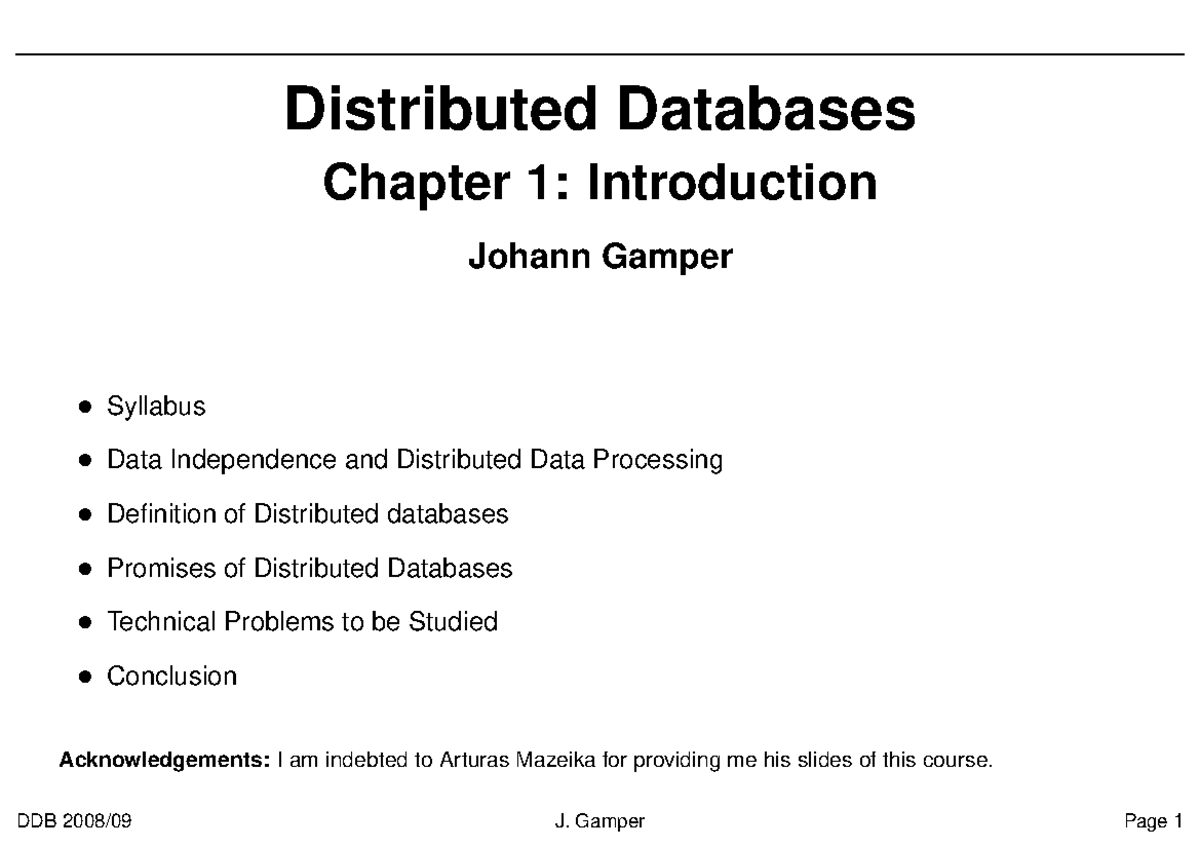Data Independence In Dbms With Example Pdf

For example, if changes in the file organization of a data file do not demand for changes in the functions in the DBMS or in the application programs, data.
A major objective for three-level architecture is to provide data independence, which means that upper levels are unaffected by changes in lower levels.
There are two kinds of data independence:
Logical Data Idependence
Logical data independence indicates that the conceptual schema can be changed without affecting the existing external schemas. The change would be absorbed by the mapping between the external and conceptual levels. Logical data independence also insulates application programs from operations such as combining two records into one or splitting an existing record into two or more records. This would require a. change in the external/conceptual mapping so as to leave the external view unchanged.

Physical Data Independence
Physical data independence indicates that the physical storage structures or devices could be changed without affecting conceptual schema. The change would be absorbed by the mapping between the conceptual and internal levels. Physic 1data independence is achieved by the presence of the internal level of the database and the n, lPping or transformation from the conceptual level of the database to the internal level. Conceptual level to internal level mapping, therefore provides a means to go from the conceptual view (conceptual records) to the internal view and hence to the stored data in the database (physical records).
Mac server 5.4 download. If there is a need to change the file organization or the type of physical device used as a result of growth in the database or new technology, a change is required in the conceptual/ internal mapping between the conceptual and internal levels. This change is necessary to maintain the conceptual level invariant. The physical data independence criterion requires that the conceptual level does not specify storage structures or the access methods (indexing, hashing etc.) used to retrieve the data from the physical storage medium. Making the conceptual schema physically data independent means that the external schema, which is defined on the conceptual schema, is in turn physically data independent.
The Logical data independence is difficult to achieve than physical data independence as it requires the flexibility in the design of database and prograll1iller has to foresee the future requirements or modifications in the design.
Data independence is a form of database management that keeps data separated from all programs that make use of it. As a cornerstone for the idea of a DBMS or database management system, this independence ensures that the data cannot be redefined or reorganized by any of the programs that make use of it. In this manner, the data remains accessible, but it is also stable and cannot be corrupted by the applications.
Within the environment of a centralized DBMS, database management relies on the process of data independence. While data transparency still exists as far as the ability of different applications to access and use the data for completing tasks, no program or application can read and then begin to make changes to the data itself. The consistency of the information makes the overall process of maintaining and managing a single database or multiple databases within a single environment much easier.
This concept is different from another approach referred to as data dependence. With this approach, the data used to run an application is actually represented in the source code for the program. The ability of the data to be modified by the program, and vice versa, means that the information is not considered constant and may be changed either by initiating the change through modifications to the source code or through using the program in other ways to adapt the core data.